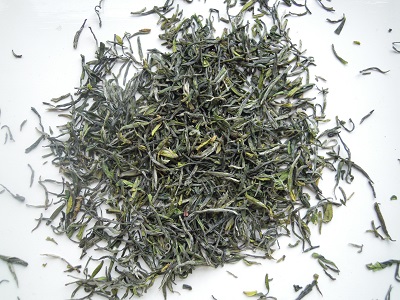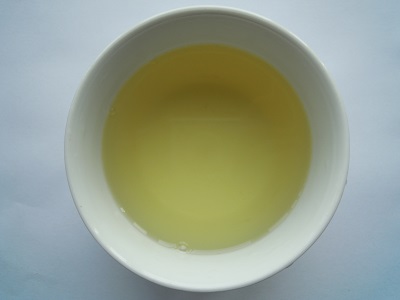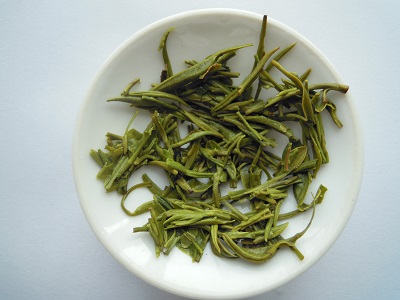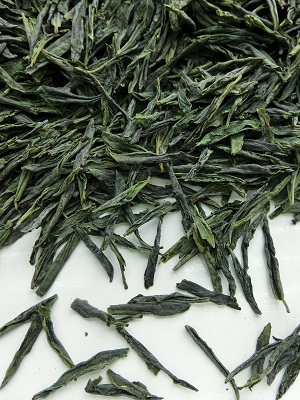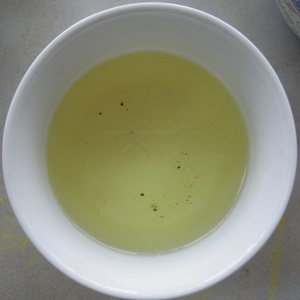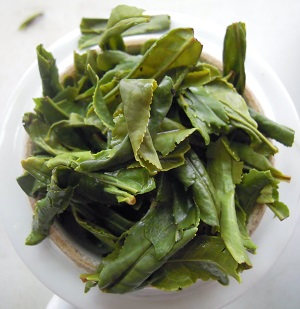Photographs by Huiling Liang
Jiangbei (literally means River North, refers to the area north of the Yangtze River in eastern China) region’s teas are little known outside of China. This region is located at 32 degrees north latitude, which globally speaking, is quite far from most tea producing regions. It was not always a natural place to grow tea. In the 1960s, the Chinese government launched a large experiment to test cultivation of southern tea cultivars in River North regions. Rizhao city from Shandong province serves as a successful example of this effort.
The weather of River North region is clearly divided by four distinct seasons. Many high mountains surround the location, providing optimal moisture level. The location is also abundant with forests, clouds, rainfall, with big temperature difference between day and night (i.e. diurnal range). These geographical advantages help keep the soil healthy and fertile, while trees more efficiently absorb chemical elements to produce higher quality green tea.
In River North region this year, plucking was delayed by rainfall and low temperature. As a result the quality of spring tea is lower than previous year and the output is also reduced.
Signature tea: Xinyang Maojian
The most famous tea of River North is Xinyang Maojian (hairy tips), produced in Xinyang, Henan province, which offers a grassier taste comparing to Long Jing, with a slight astringent edge. It consists exclusively of buds and is by far the leading tea in terms of production volume, quality, brand awareness. This year the quality of Xinyang Maojian is an improvement over last year, while the overall production volume is about the same. Online price wars for cheaper Maojian this year affected the overall selling price – and to an extent, name reputation – of the finer grades. Yet despite this, small growers of the premium grades are holding out and not selling their stocks for the same cheap price as the lower grades.
Xinyang Maojian (dry leaves, liquor, wet leaves)
Liu’an Guapian (dry leaves, liquor, wet leaves)
Tasters’ tea recommendation
- “I recommend teas from two mountains in Xinyang which produce Maojian green tea: Tumen and Heilongtan. Xinyang Maojian green tea is known for its fresh and tender aroma, and umami taste, usually the steeped tea is yellowish green with visible white fuzz. Tumen tea is greener than average with white fuzz. Although it is not a famous mountain for producing Maojian, Tumen tea features a light flowery aroma that resembles honeysuckle but much lighter. When you first drink it, you can taste a little bitterness which soon melted away, and the lingering flower aroma and fresh umami taste give a very comfortable mouth feel.” (by Xiao Wang, Xinyangmaojian Tea Factory Quality Control)
- Tea tasting instruction: High ball glass, use 3g of tea, pour boiling water to half glass, smell the aroma, wait for 10 seconds and fill glass with boiling water, leave for 1 minute, smell aroma and look at the color of tea. Taste the tea for its flavors. When I drink Xinyang Maojian on my own, I usually put in the tea, fill glass with one third of glass of cold water and then add boiling water. When I finish half of the glass, I would refill with boiling water. This way usually the best taste come at the second and third steeping.
- Yuanchun tea made by Liuyuanchun Tea Company of Rizhao, Shandong. (by Daokun Ouyang)
